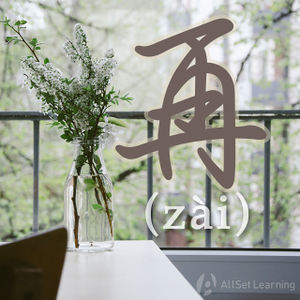Difference between revisions of "Expressing "in addition" with "zaishuo""
| Line 2: | Line 2: | ||
"再说..." (zàishuō...) is used in a similar way as "In addition" or "Moreover", in that it is adding on additional information or reasons to the topic at hand. | "再说..." (zàishuō...) is used in a similar way as "In addition" or "Moreover", in that it is adding on additional information or reasons to the topic at hand. | ||
| + | |||
| + | == Structure == | ||
| + | |||
| + | Just add 再说 to the beginning of the second clause of your sentence. Remember that both statements should be related to each other! | ||
| + | |||
| + | <div class="jiegou"> | ||
| + | |||
| + | Clause 1 , 再说 + Clause 2 | ||
| + | |||
| + | </div> | ||
== Examples == | == Examples == | ||
| − | |||
<div class="liju"> | <div class="liju"> | ||
Revision as of 06:00, 20 February 2013
-
Level
-
Similar to
-
Used for
-
Keywords
"再说..." (zàishuō...) is used in a similar way as "In addition" or "Moreover", in that it is adding on additional information or reasons to the topic at hand.
Structure
Just add 再说 to the beginning of the second clause of your sentence. Remember that both statements should be related to each other!
Clause 1 , 再说 + Clause 2
Examples
- 我 的 家人 想 去 美国 旅行,再说 我们 还 可以 看望 我们 的 亲戚。
- 现在 太 早 了,我 不 想 去,再说 那 个 商店 还 没 开门。
- 我 不想 帮助 他,因为 他 经常 说谎,再说 我 也 没 钱。
See also
Sources and further reading
Books
- Common Chinese Patterns 330 (汉语常用格式330例) (pp. 297)→buy
- Integrated Chinese: Level 2, Part 1 (pp. 17-8) →buy
- Modern Mandarin Chinese Grammar: A Practical Guide (pp. 252) →buy



